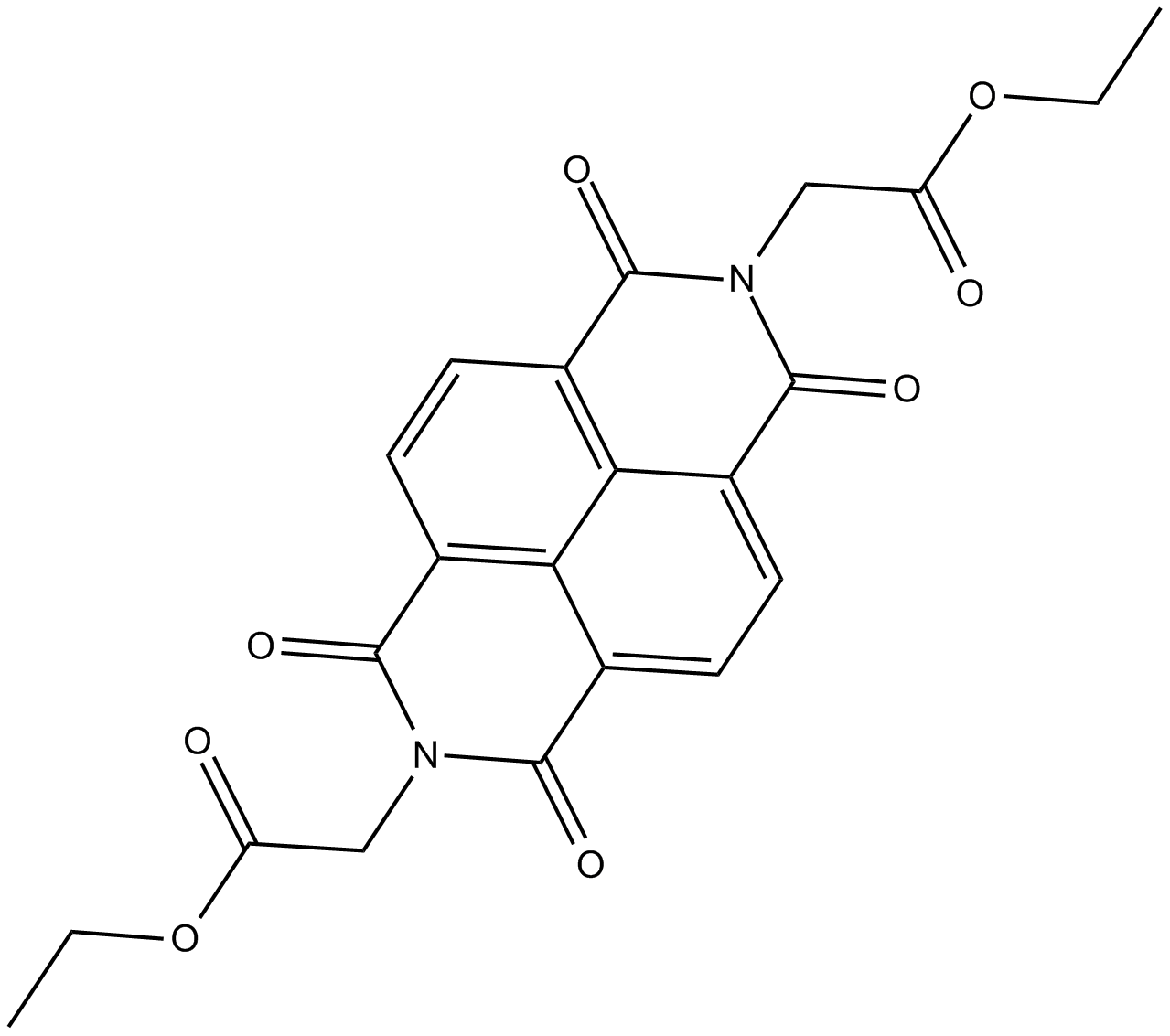PPIase-Parvulin Inhibitor (Synonyms: HIC 016C,PiB) |
| Catalog No.GC12953 |
PPIases Pin1 and Pin4 inhibitor,cell-permeable
Products are for research use only. Not for human use. We do not sell to patients.

Cas No.: 64005-90-9
Sample solution is provided at 25 µL, 10mM.
Targets: Pin1 and Pin4
IC50: 1.5 and 1.0 μM for Pin1 and Pin4, respectively.
PPIase-Parvulin Inhibitor is a cell-permeable inhibitor of the PPIases Pin1 and Pin4, with the IC50 values of 1.5 and 1.0 μM, respectively [1].
In Vitro: PPIase-Parvulin Inhibitor could significantly inhibit a number of cancer cell lines such as HSC2, HSC4, HCT116, SKOV3 that overexpressed Pin1 and Pin4, with the IC50 values ranging from 2-5 μM, while cancer cell lines with a low expression of Pin1 such as HLE and HepG2 were less sensitive to PPIase-Parvulin Inhibitor [1]. Besides, 0.5 μg/ml PPIase-Parvulin Inhibitor could reduce MCF10A-Myc cells colony formation which was induced by Pin1 overexpression [2]. Furthermore, in NOP6 mouse mammary tumor cells, 1.5 μM PPIase-Parvulin Inhibitor could significantly impair mammosphere formation efficiency (MFE) at the M2 level [3].
In Vivo: No data available recently.
Clinical trial: No data available recently.
References:
[1] Uchida T, Takamiya M, Takahashi M, et al. Pin1 and Par14 Peptidyl Prolyl Isomerase Inhibitors Block Cell Proliferation[J]. Chemistry & Biology, 2003, 10(1):15.
[2] Farrell A S, Pelz C, Wang X, et al. Pin1 Regulates the Dynamics of c-Myc DNA Binding To Facilitate Target Gene Regulation and Oncogenesis[J]. Molecular and Cellular Biology, 2013, 33(15): 2930-2949.
[3] Rustighi A, Zannini A, Tiberi L, et al. Prolyl‐isomerase Pin1 controls normal and cancer stem cells of the breast[J]. Embo Molecular Medicine, 2014, 6(1): 99-119.
Average Rating: 5 (Based on Reviews and 3 reference(s) in Google Scholar.)
GLPBIO products are for RESEARCH USE ONLY. Please make sure your review or question is research based.
Required fields are marked with *




















